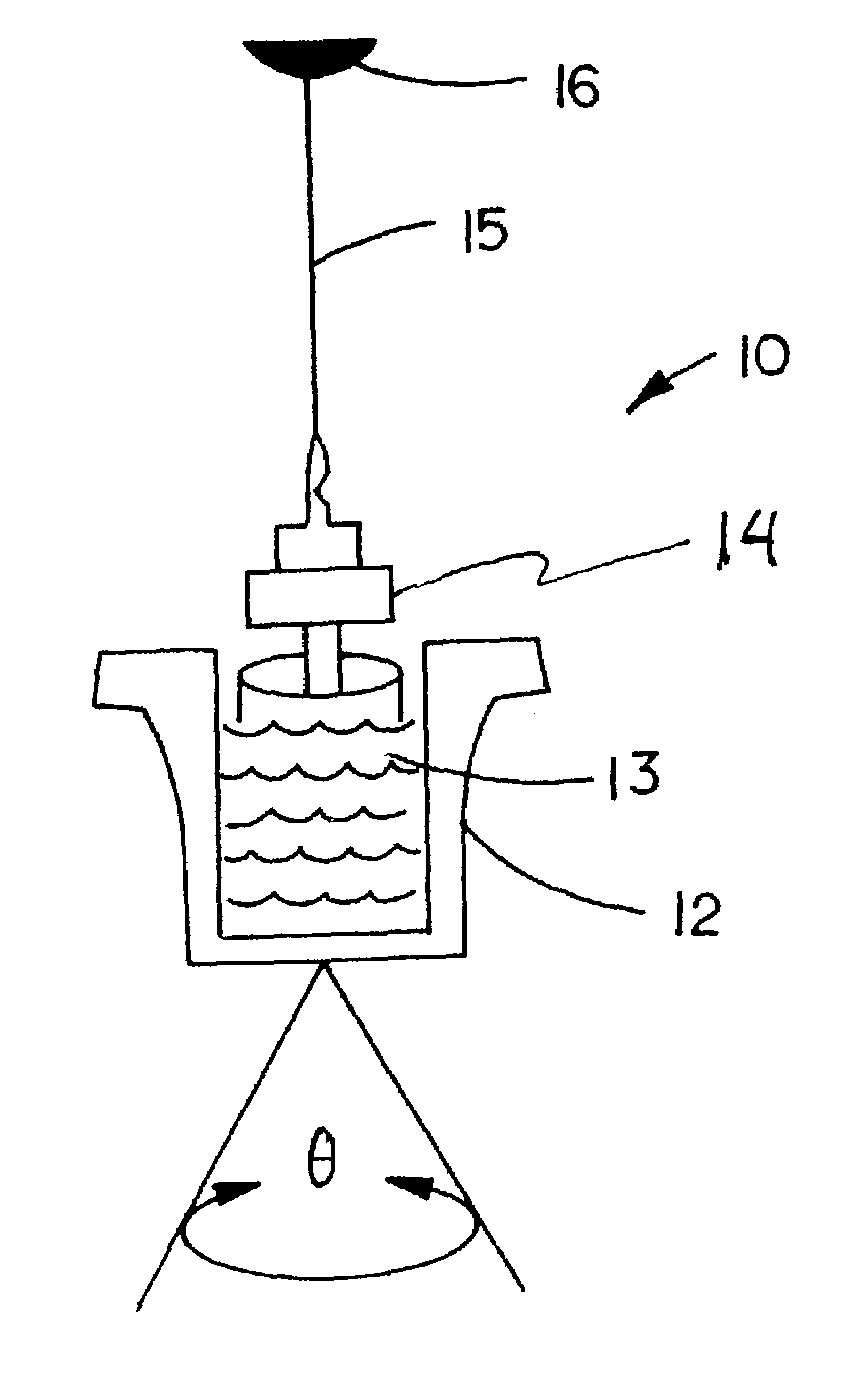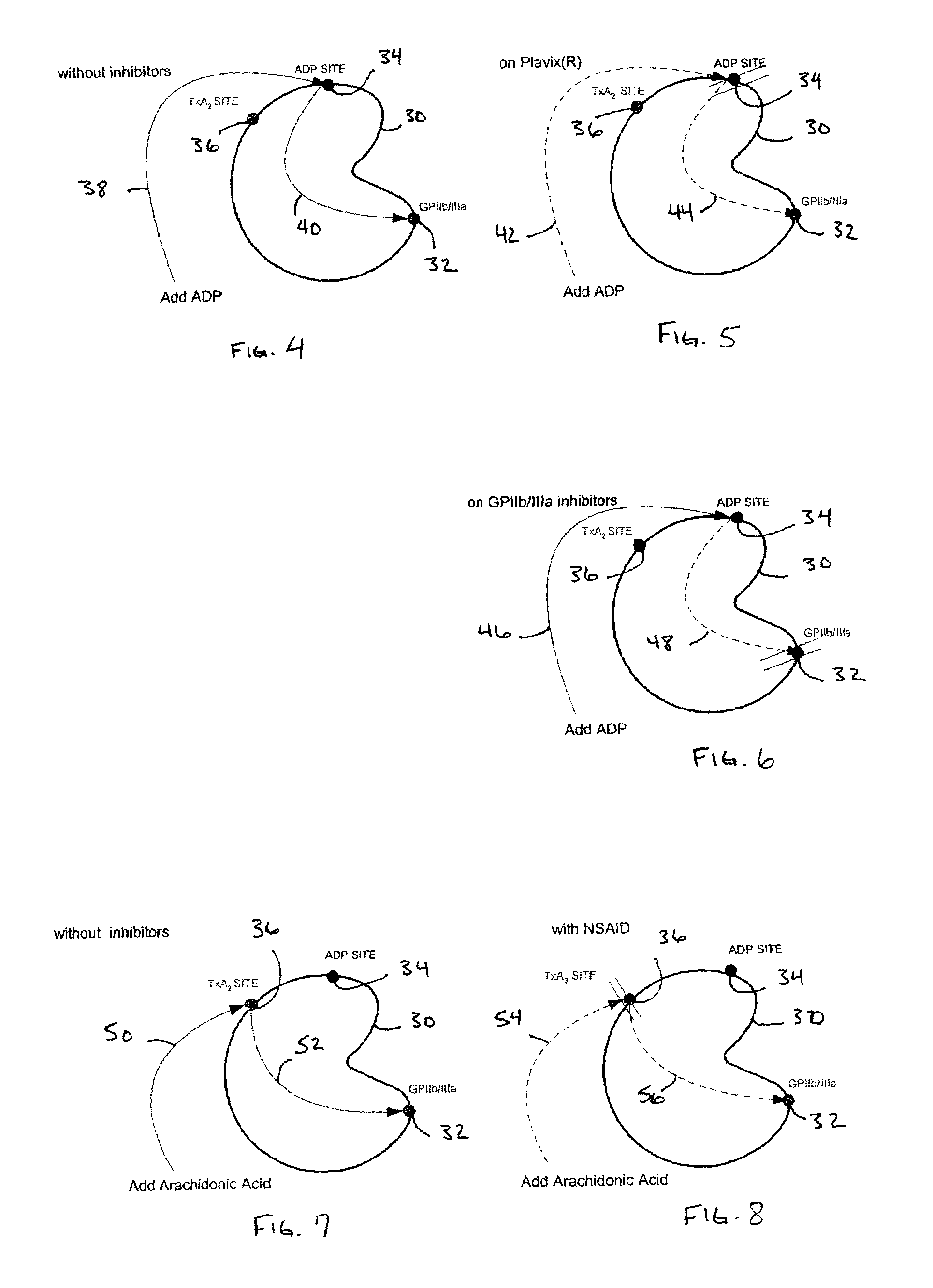Protocol for monitoring platelet inhibition
a technology of antiplatelet agents and protocols, which is applied in the field of protocols for monitoring the efficacy of antiplatelet agents, can solve the problems of no rapid, reliable, quantitative, point-of-care test for monitoring therapeutic platelet blockade, and patient may remain at risk
- Summary
- Abstract
- Description
- Claims
- Application Information
AI Technical Summary
Benefits of technology
Problems solved by technology
Method used
Image
Examples
Embodiment Construction
[0025]In accordance with the preferred embodiments of the invention, a hemostasis analyzer, such as the Thrombelastograph® (TEG®) hemostasis analyzer available from Haemoscope Corp., Skokie, Ill., is utilized to measure continuously in real time, the hemostasis process from the initial fibrin formation, through platelet-fibrin GPIIb / IIIa bonding and lysis. While several specific anti-platelet agents are discussed herein in connection with the preferred embodiments of the invention, it will be appreciated the invention has application in connection with virtually any anti-platelet agents. Moreover, it will be further appreciated that the invention has application for measuring the efficacy of coagulation enhancing or platelet activating agents.
[0026]In accordance with the preferred embodiments of the invention, utilization of the hemostasis analyzer in accordance with the inventive protocol permits: confirmation of the attainment of therapeutic level of GPIIb / IIIa receptor blockade; ...
PUM
| Property | Measurement | Unit |
|---|---|---|
| time | aaaaa | aaaaa |
| angle | aaaaa | aaaaa |
| shear stress | aaaaa | aaaaa |
Abstract
Description
Claims
Application Information
 Login to View More
Login to View More - R&D
- Intellectual Property
- Life Sciences
- Materials
- Tech Scout
- Unparalleled Data Quality
- Higher Quality Content
- 60% Fewer Hallucinations
Browse by: Latest US Patents, China's latest patents, Technical Efficacy Thesaurus, Application Domain, Technology Topic, Popular Technical Reports.
© 2025 PatSnap. All rights reserved.Legal|Privacy policy|Modern Slavery Act Transparency Statement|Sitemap|About US| Contact US: help@patsnap.com



